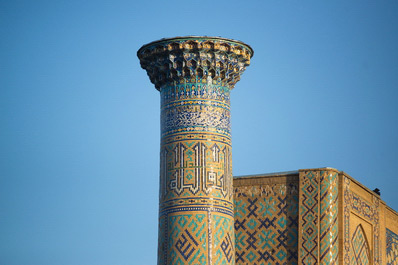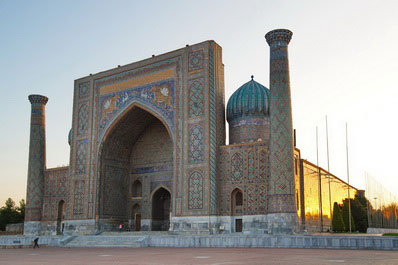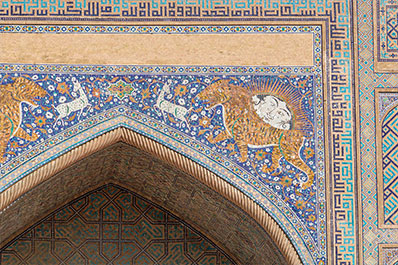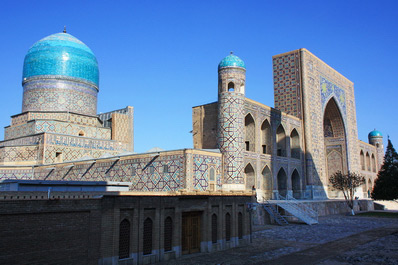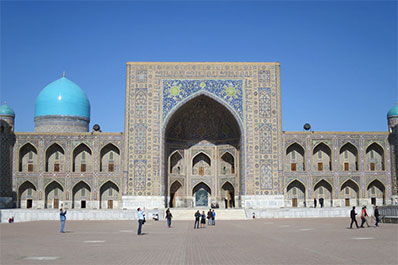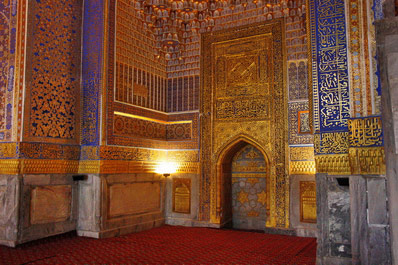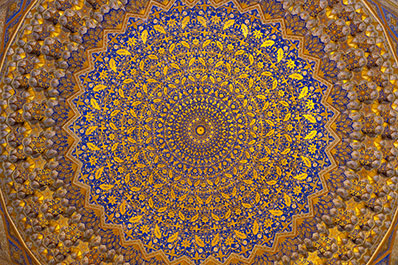Registan Square, Samarkand
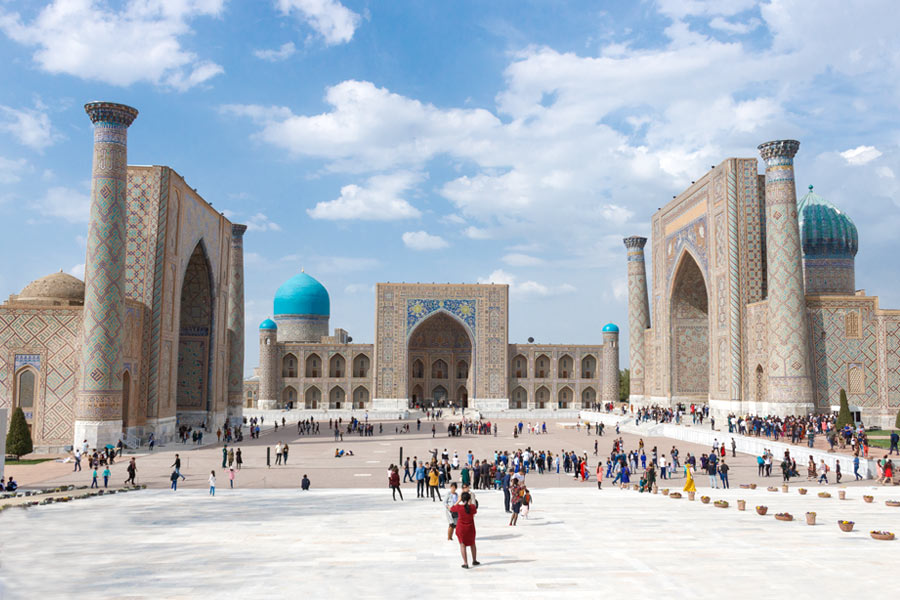
Registan Square in Samarkand is one of the most famous and majestic landmarks in Central Asia. It stands at the crossroads of the Great Silk Road, where trade routes met hundreds of years ago.
In the past, a large bazaar with shops and covered trading rows filled the square. In days of significant events festivals were held there while decrees of rulers were announced.
After Samarkand became the capital of the Timurid Empire, Registan evolved into a center of cultural life and enlightenment.
It was named "Registan" in the early 15th century with the construction of the first madrasah, and in Persian, "Registan" means "a place covered with sand". This name was also used for the main squares of other Central Asian cities, such as Bukhara.
Madrassahs: The Three Gems of Registan
Registan Square is composed of three madrassahs—Muslim educational institutions where both religious and secular knowledge were taught. The three madrassahs frame a spacious, tiled area, creating a unified architectural composition. Each of the three buildings—Ulugbek Madrasah, Sherdor Madrasah, and Tillya-Kori Madrasah—is an architectural masterpiece and a valuable cultural and historical heritage site.
Ulugbek Madrasah
The oldest building in Registan Square is the Ulugbek Madrasah, named after Amir Timur’s famous grandson. Under Mirzo Ulugbek’s rule, Samarkand became a leading center of global culture, thriving in science and art. Built between 1417 and 1420, the madrasah quickly gained a reputation as a top educational institution in Central Asia. Subjects like theology, mathematics, astronomy, philosophy, logic, and Arabic language were taught there, and many students went on to become prominent scholars and theologians.
Ulugbek, an astronomy enthusiast, also built a large observatory nearby and created highly accurate star charts that were considered a standard for two centuries. The madrasah now has an exhibition dedicated to his astronomical achievements and hosts art workshops and shops where visitors can buy handmade souvenirs from Samarkand artisans.
Architecturally, the Ulugbek Madrasah features a harmonious blend of monumentality and elegance, with a rectangular layout, an inner courtyard, and a richly decorated entrance portal (peshtak) in shades of blue, turquoise, and gold. Mosaic and glazed tiles form intricate star and floral patterns.
Sherdor Madrasah
Sherdor Madrasah was added to the square in the early 17th century when Yalangtush Bahadur, a savvy politician and skilled military leader, became the emir of Samarkand. To establish his status, he ordered the construction of another madrasah opposite Ulugbek’s madrasah, with a scale that rivaled the first.
Sherdor Madrasah, with its soaring minarets, is adorned with traditional ornaments and vibrant geometric mosaics. The entrance portal features a mosaic of two tigers carrying the sun on their backs, although “Sher Dor” means “madrasah with lions”.
The minarets, decorated with majolica and crowned with blue domes, give the building symmetry and a sense of grandeur.
Behind the madrasah’s walls lies the ancient Chorsu trading dome, underscoring Registan’s role as a key trade center in medieval Samarkand.
Tillya-Kori Madrasah
Built between 1646 and 1660, the Tillya-Kori Madrasah completes the architectural ensemble of Registan Square, adding a sense of completeness and balance. The name "Tillya-Kori", which translates to "covered with gold", reflects the lavish interior decoration of the building. The mosque within the madrasah is a striking feature in the eastern part of the complex.
The interior walls and dome of the mosque are covered in gold, creating an impression of a luminous space. The combination of gold, blue, and turquoise in the décor, along with floral and geometric patterns and intricate calligraphic inscriptions, showcase the craftsmanship of Central Asian architects and artists of the time.
Nearby is the tomb of the Sheibanid dynasty rulers, who came to power in Samarkand and other Central Asian cities after the fall of the Timurids.
The historical ensemble of Registan Square is a unique example of elegant medieval Islamic architecture that has endured through centuries of history. The colorful tiles and mosaics of its walls reflect a deep reverence for tradition and the artistic skill of master craftsmen. Every detail in Registan’s buildings speaks to the high level of architectural and engineering expertise that created structures of remarkable harmony and sophistication, symbolizing Samarkand's strength and grandeur and underscoring its significance in world history.



